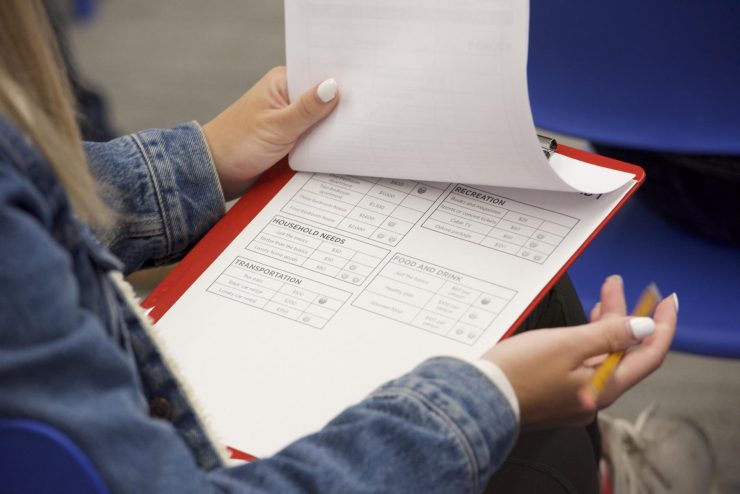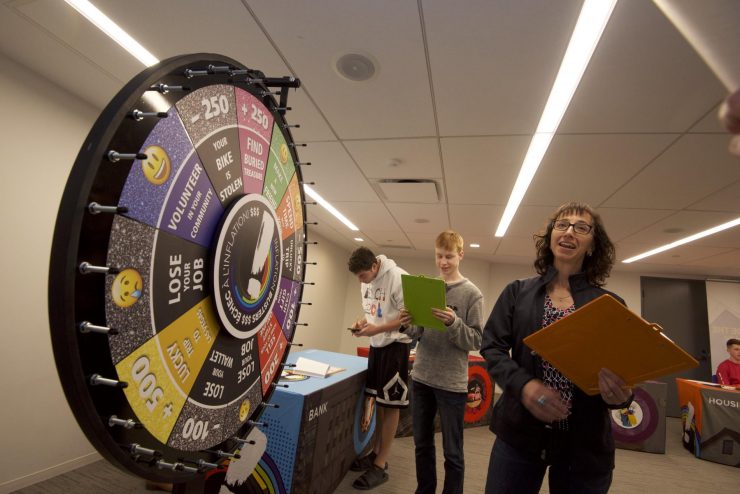
Develop a budget and navigate the economy in a time of high inflation in this game-based program that's offered onsite.
Students will see first-hand how difficult it is to plan when inflation rises. As goods become more expensive, students will look for ways to afford what they need. A great game to build financial skills while learning about the Bank’s critical role in keeping inflation low and stable.
Grades
Grades 9 to 12; Secondary Cycle Two and CEGEP
Big idea
Low and stable inflation allows everyone to plan for the future.
Learning objectives
Students will:
- compare the life of a consumer in times of both high inflation and low, stable inflation
- recognize the role of the Bank of Canada’s monetary policy in the financial choices and lives of consumers
- evaluate the importance of the economy and inflation in their lives
Curriculum links
Ontario
- Economics
- Grade 11: The individual and the economy
- Political and economic systems
- Financial planning
- Government intervention
- Grade 12: Analysing current economic issues
- The role of government in redressing imbalance
- Monetary policy
- Grade 12: Making personal economic choices
- Financial goals and financial planning
- Understanding the canadian economy
- Business Studies
- Grade 9 or 10: Introduction to business
- Economic basics
Quebec
- Secondary V: Financial Education
- Elements in drawing up a budget
- Why consumer habits may change
- Reasons for saving money
- The government and the economy
Duration
This onsite program runs for approximately 120 minutes. You’re welcome to book a 30 minute self-guided visit following your program.
Availability
This onsite program is offered Thursdays and Fridays. The last booking is at 15:00.
Cost
All school programs are offered free of charge.
Class size
25 to 50 students per program.
Book your visit
or call 613‑782‑8914 to book a visit. Please include the following information in your request:
- date and time of arrival
- number of students and teachers
- program or tour of your choice
- preferred official language
- any accessibility or special needs
We will confirm your booking within five to seven business days.
Before your visit
Try out the following activities:
- Delve deeper into the Consumer Price Index (CPI) and create a personalized CPI with the lesson plan Price Check: Inflation in Canada.
- Have a class discussion on inflation in Canada over time with the video Inflation Over Time.



